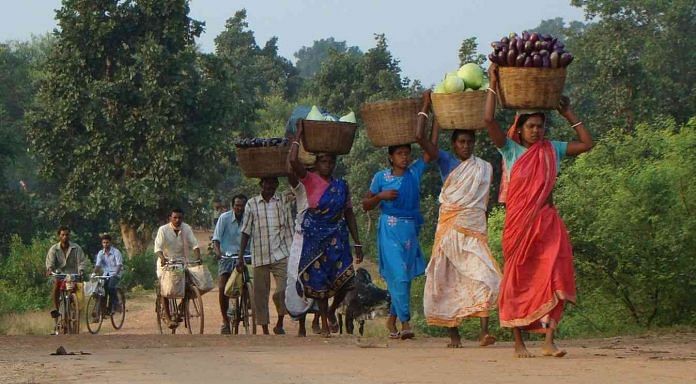
Thank you dear subscribers, we are overwhelmed with your response.
Your Turn is a unique section from ThePrint featuring points of view from its subscribers. If you are a subscriber, have a point of view, please send it to us. If not, do subscribe here: https://theprint.in/subscribe/
As the world takes notice of the phenomenal success of United Payments Interface (UPI) for millions of people in India, it also serves as a reminder to evaluate the role technology plays in how we access our financial services. The core philosophy driving all our national-level changes – be it UPI or the push for a Cashless India or the effort to get bank accounts for unbanked individuals – is financial inclusion.
In a country as diverse as India, financial inclusion focuses on three core aspects – usage, ease of access and quality of financial and banking services. These are outlined in the Financial Inclusion Index constructed by the Reserve Bank of India (RBI) to gauge the extent of financial inclusion.
The core area of financial inclusion this piece will focus on is ease of access. As per a report by the World Bank, 130 million people in India do not have access to formal banking. This has huge consequences for an economy like ours like –
Poverty levels
The more people remain outside the banking system, the less formal opportunities they get to escape poverty. This is because they are cut out from accessing schemes, aid and help from schemes that require them to have a bank account.
Widening the gender gap
Traditionally, the gap between men and women accessing financial services has meant lack of agency for women to take their own economic decisions. Lack of financial inclusion increases this gap between the genders.
Social exclusion
A lack of financial inclusion means that vulnerable sections of our society often don’t get an opportunity to be socially included and integrated, leading to situations rife with injustice and inequality.
Having laid out the consequences, it is imperative to point out the problem that many unbanked individuals facing with issues of access to financial products face – vicious credit cycles.
Farmers, artisans and rural entrepreneurs are especially vulnerable to vicious credit cycles that play out because they do not have access to formal banking or a credit score. To get credit for running their setup or cover input costs for their farms, they often end up taking money as loans from private money-lenders who lend at rates as high as 30-40% per annum. Because of a lack of financial inclusion and financial literacy, this section of the population gets stuck in vicious credit cycles they are unable to get out of – marking them out for a life of exploitation and misery. There have been reports of multiple instances of people taking their lives because of the inhuman treatment by private moneylenders. This is a systemic menace.
This brings us to consider social investing – a truly democratic solution that can herald a massive shift towards financial inclusion. Social investing is where people from all over the country can invest in and lend to rural entrepreneurs struggling with access to credit. Done through the model of peer-to-peer lending and pioneered by Rang De – India’s leading social investing platform – social investing lets you lend to farmers, artisans, and rural entrepreneurs at low rates of interest. The low interest rates make credit affordable to the borrower but also retain the dignity by requiring them to repay the amount in suitable installments.
Not only is there transparency of where your lent money is going, platforms like Rang De are also RBI-registered and operated as Non-Banking Financial Companies (NBFC-P2Ps) which follow very specific and comprehensive guidelines of operating in this space. What social investing does is it democratizes access to low-cost credit and in the long run, adds immensely to financial inclusion goals.
Not only are rural entrepreneurs required to deal with lending and repayments of their borrowed amount through their own bank accounts, at the end of their successful repayments, but they also get a formal credit score. This is a win-win for not only people who want to create impact and lend to rural entrepreneurs but also these entrepreneurs who not only get low-cost credit but also an entry into India’s formal banking and financial services system.
Social investing as a credit revolution holds mindboggling possibilities for the Indian economy and population. If adopted by the mainstream population who has disposable income, we can make low-cost credit and formal banking available to millions of people at minimal risk and massive social impact. Financial inclusion remains a big challenge for India and something that holds back our true potential for growth. But with social investing, we can aim to hit multiple objectives through this dynamic, transparent, and life-changing alternative. A paradigm shift awaits and the next decade for India will truly prove these words right.
These pieces are being published as they have been received – they have not been edited/fact-checked by ThePrint.

COMMENTS